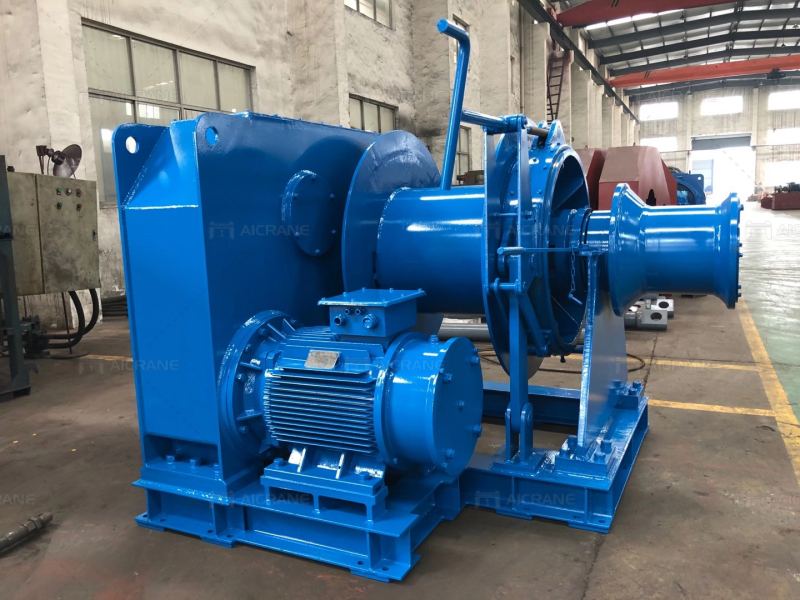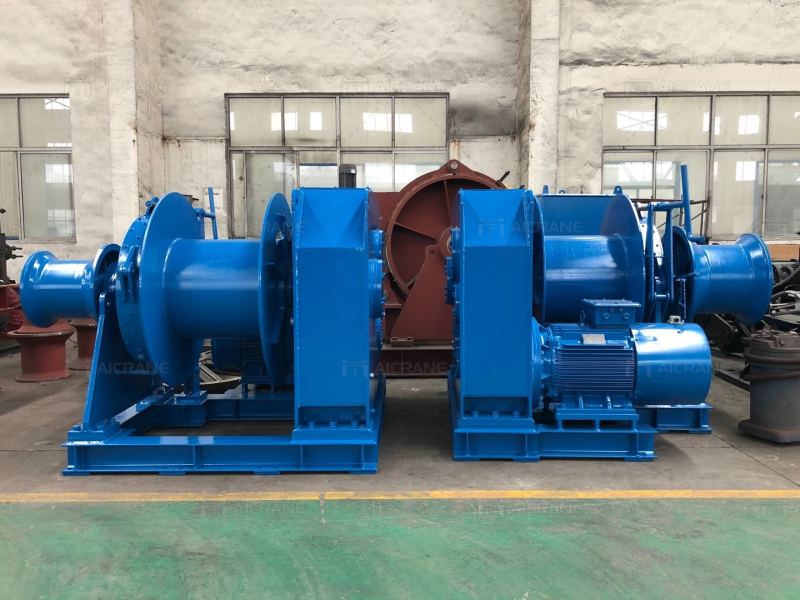Ports are the lifeline of global trade, serving as gateways for the movement of goods and commodities across the world. As the maritime industry continues to evolve, it is essential for ports to modernize their infrastructure and operations to meet growing demands efficiently and sustainably. One technology that has been instrumental in this modernization effort is electric mooring winches. In this article, we will delve into the key advantages of electric mooring winches and how they are revolutionizing port technology.

The Evolution of Mooring Winches
Traditionally, mooring winches in ports have been powered by diesel engines or hydraulic systems. While these systems have served their purpose, they come with their own set of limitations. Diesel-powered winches emit greenhouse gases and contribute to air pollution, posing environmental concerns. Hydraulic systems, on the other hand, are prone to leaks and require regular maintenance.
Electric mooring winches, however, offer a cleaner and more efficient alternative. They are powered by electricity, which can be generated from a variety of sources, including renewable energy, making them a greener option. Moreover, electric winches are more reliable and require less maintenance than their traditional counterparts, leading to reduced downtime and lower operating costs.
Advantages of Electric Mooring Winches
- Environmental Sustainability: One of the most significant advantages of electric mooring winches is their environmental sustainability. Ports are under increasing pressure to reduce their carbon footprint, and electric winches align with these goals. By using electricity from renewable sources, ports can significantly reduce their greenhouse gas emissions.
- Efficiency and Precision: Electric winches offer precise control over the mooring process, allowing for smoother and more accurate operations. This is crucial in minimizing the risk of accidents and damage to vessels and port infrastructure.
- Lower Operating Costs: Electric mooring winches have fewer moving parts compared to traditional diesel or hydraulic winches, resulting in reduced maintenance requirements and lower operating costs over the long term. They are also more energy-efficient, translating into cost savings.
- Reduced Noise and Vibrations: Electric winches operate more quietly than their diesel counterparts, reducing noise pollution in and around the port area. They also generate fewer vibrations, which can be beneficial for the structural integrity of port facilities.
- Adaptability: Electric mooring winches can be easily integrated into existing port infrastructure, making them a versatile choice for modernization efforts. They can be retrofitted onto older vessels and can adapt to various vessel sizes and types.
- Remote Monitoring and Automation: Many electric winches come equipped with advanced monitoring and control systems that allow for remote operation and real-time performance monitoring. This automation enhances safety and efficiency.

Case Studies: Ports Embracing Electric Mooring Winches
Let’s look at a few examples of ports around the world that have embraced electric mooring winches to modernize their operations:
- Port of Los Angeles, USA: As one of the busiest ports in the world, the Port of Los Angeles has made significant investments in green technology. Electric mooring winches have been installed on several berths, helping reduce emissions and improve operational efficiency.
- Port of Rotterdam, Netherlands: The Port of Rotterdam, Europe’s largest port, has implemented electric winches as part of its sustainability initiatives. These winches not only reduce environmental impact but also enhance safety during vessel mooring.
- Port of Singapore: Singapore, a global hub for maritime trade, has adopted electric mooring winches to meet its sustainability goals. These winches have been instrumental in reducing the port’s carbon footprint while maintaining operational excellence.
Challenges and Considerations
While electric mooring winches offer numerous benefits, their adoption also comes with some challenges and considerations. The initial investment in electric winches can be higher than traditional systems, and ports must assess the return on investment over time. Additionally, ports need to ensure a reliable and sufficient power supply to support electric winch mooring operations.
In an era of increased environmental awareness and the need for efficient, sustainable port operations, electric mooring winches have emerged as a game-changer. Their ability to reduce emissions, lower operating costs, and enhance safety and precision make them a compelling choice for port modernization efforts. As more ports around the world embrace this technology, it is clear that electric mooring winches are advancing port technology and contributing to a greener, more efficient future for the maritime industry. By investing in these modern winch solutions, ports can position themselves for long-term success while reducing their impact on the environment.